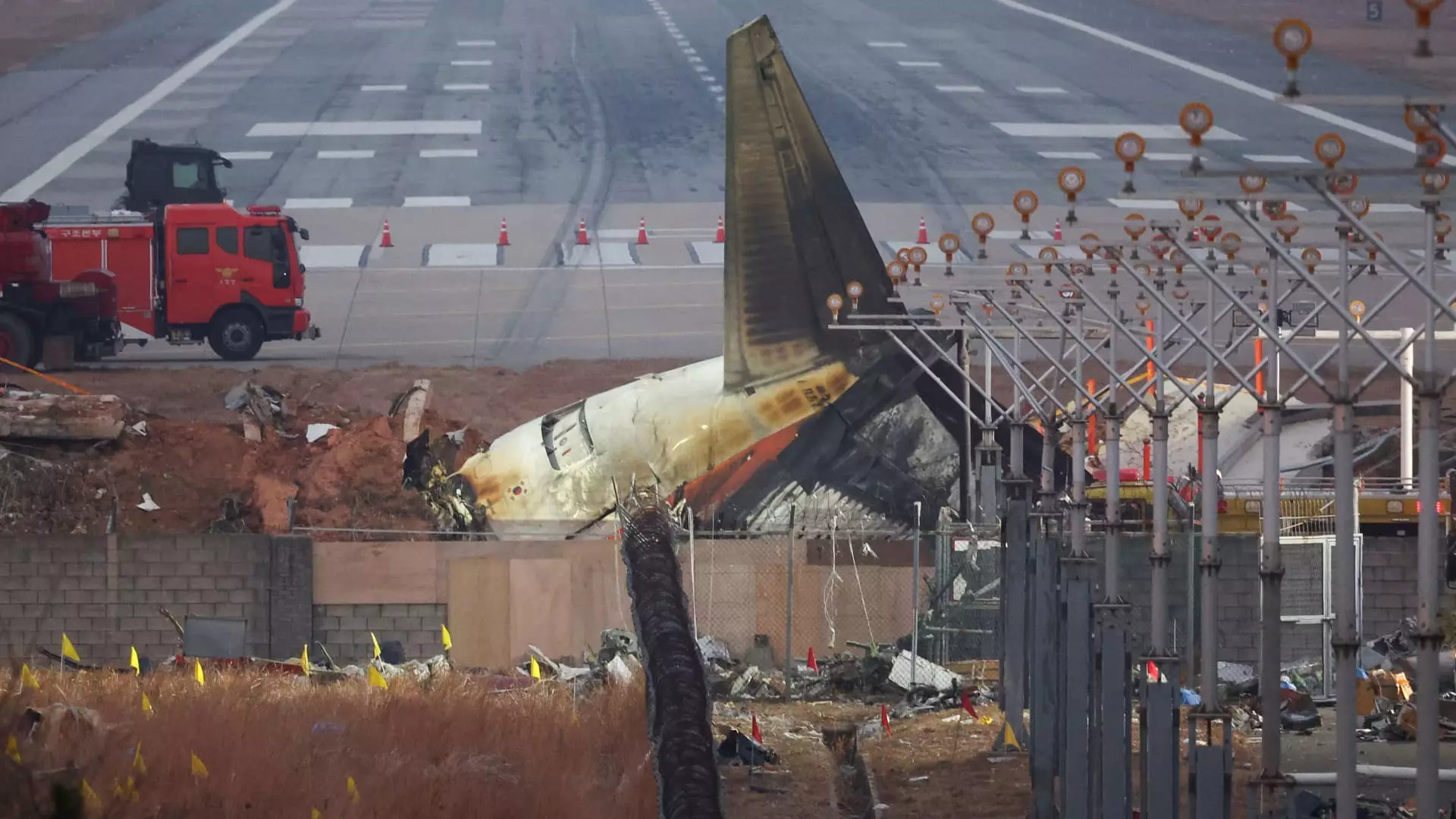The tragic crash of a Jeju Air Boeing 737-800 over the weekend has not only led to the loss of 179 lives but has raised a plethora of concerns about aviation safety, airline operations, and the integrity of the aircraft design. As South Korea moves to investigate the circumstances surrounding this incident, Boeing has found itself under scrutiny once again—a situation that echoes the previous whirlwind of issues linked to its aircraft models. With the market reacting negatively and shares dipping more than 2% on Monday, it becomes critical to dissect the fallout from this disaster and its potential ramifications for stakeholders including airlines, manufacturers, and regulatory bodies.
On Sunday, the ill-fated flight attempted an emergency landing at Muan International Airport. Reports indicate that the aircraft landed without its landing gear deployed, subsequently skidding off the runway and crashing into a concrete wall, igniting flames in the process. The harrowing sequence of events—including a pilot’s alert of a “go-around” and a “Mayday” call—raises questions about the factors that may have led to this tragic situation. According to South Korea’s Ministry of Land, Infrastructure, and Transport (MOLIT), early signs pinpoint a potential “bird strike” following a warning from the control tower. However, uncertainty still clouds the investigation, necessitating deep examination of available evidence, particularly the black boxes that have now been sent for analysis.
In light of the tragedy, South Korea’s aviation authorities immediately initiated an emergency inspection of all 737-800 aircraft operating within its domestic carriers. This is not just a regulatory formality; it is a proactive measure intended to restore public confidence and ensure the safety of airline operations throughout the country. Acting President Choi Sang-mok’s directive to MOLIT for a “comprehensive special inspection” signifies a serious commitment to understanding the complexities of aircraft performance and maintenance within the region’s aviation landscape.
The impact of this crash reaches beyond Jeju Air alone; it has localized implications for all operators of the Boeing 737-800, a model that holds a significant position in operational fleets globally. Approximately 4,400 of these aircraft operate worldwide, making up about 17% of the active global fleet. Therefore, such scrutiny is imperative for maintaining safety standards, especially considering that this model is frequently used by low-cost carriers in South Korea.
Boeing’s response to the crash reflects a somber acknowledgment of the incident and a readiness to cooperate with ongoing investigations. In a statement, the company expressed its support for Jeju Air and extended condolences to families affected by the crash. However, this tragedy puts Boeing in a precarious position; it must navigate public perception amidst ongoing concerns about aircraft safety, particularly following previous setbacks, including the issues surrounding the 737 Max.
The ongoing investigation involving U.S. authorities—including the National Transportation Safety Board (NTSB) and the Federal Aviation Administration (FAA)—coupled with the inclusion of CFM International, the engine manufacturer, emphasizes the gravity of the situation. It will be essential to comb through maintenance records and operational logs to ensure that no underlying systemic issues contributed to the crash.
The Jeju Air incident serves as a stark reminder of the essential need for a robust safety culture within the aviation industry. Following the crash, Jeju Air’s management asserted that there were no mechanical faults or shortcomings in safety preparations that led to this tragic outcome. Their confidence will be tested as rigorous investigations unfold to discover any slips in operational compliance or maintenance practices.
Moreover, the potential re-examination of regulations associated with bird strikes highlights an evolving approach to aviation safety in South Korea. Those in charge of regulatory frameworks must reserve no effort in reinforcing areas that may have previously been overlooked, especially concerning new airports under construction where wildlife-related hazards can present significant risks.
As investigations progress and South Korea heightens its vigilance over aviation safety, lessons must be drawn from the Jeju Air crash to prevent such tragic loss of life from occurring in the future. While the Boeing 737-800 boasts a solid safety record and remains a reliable workhorse for many airlines, the commitment to ensuring consistent and uncompromising operational standards will play a critical role in restoring confidence in air travel.
Ultimately, the crux of the matter lies in a collaborative effort among airlines, manufacturers, and regulatory bodies to foster a culture of safety that not only reacts to tragedies but proactively seeks to understand and mitigate risks before they lead to catastrophe. Only through such endeavors can we hope to secure the safety of future air travel and prevent another tragic loss of life in the skies.

